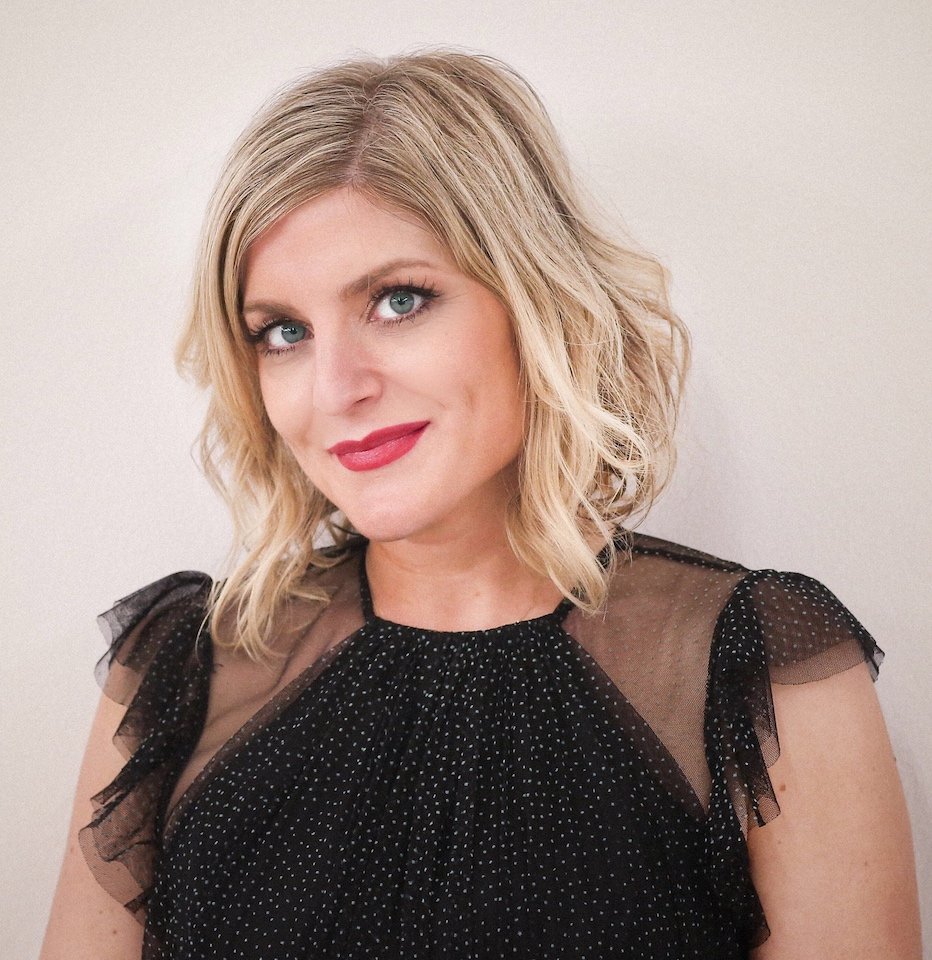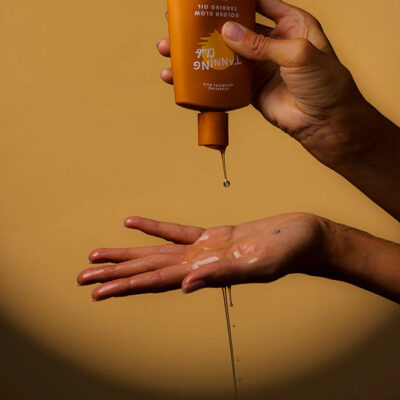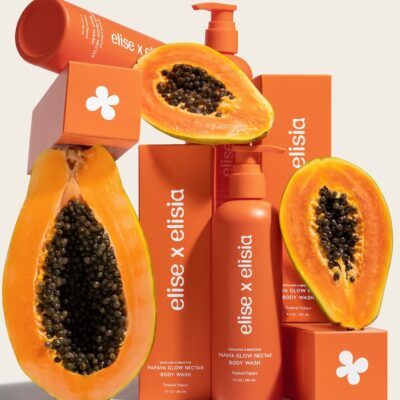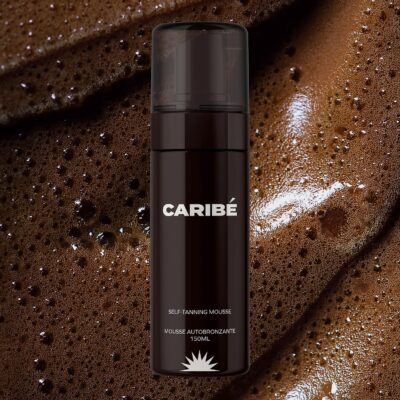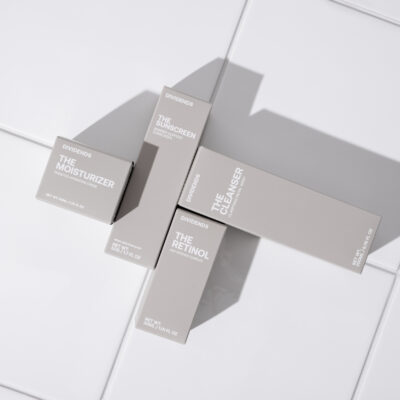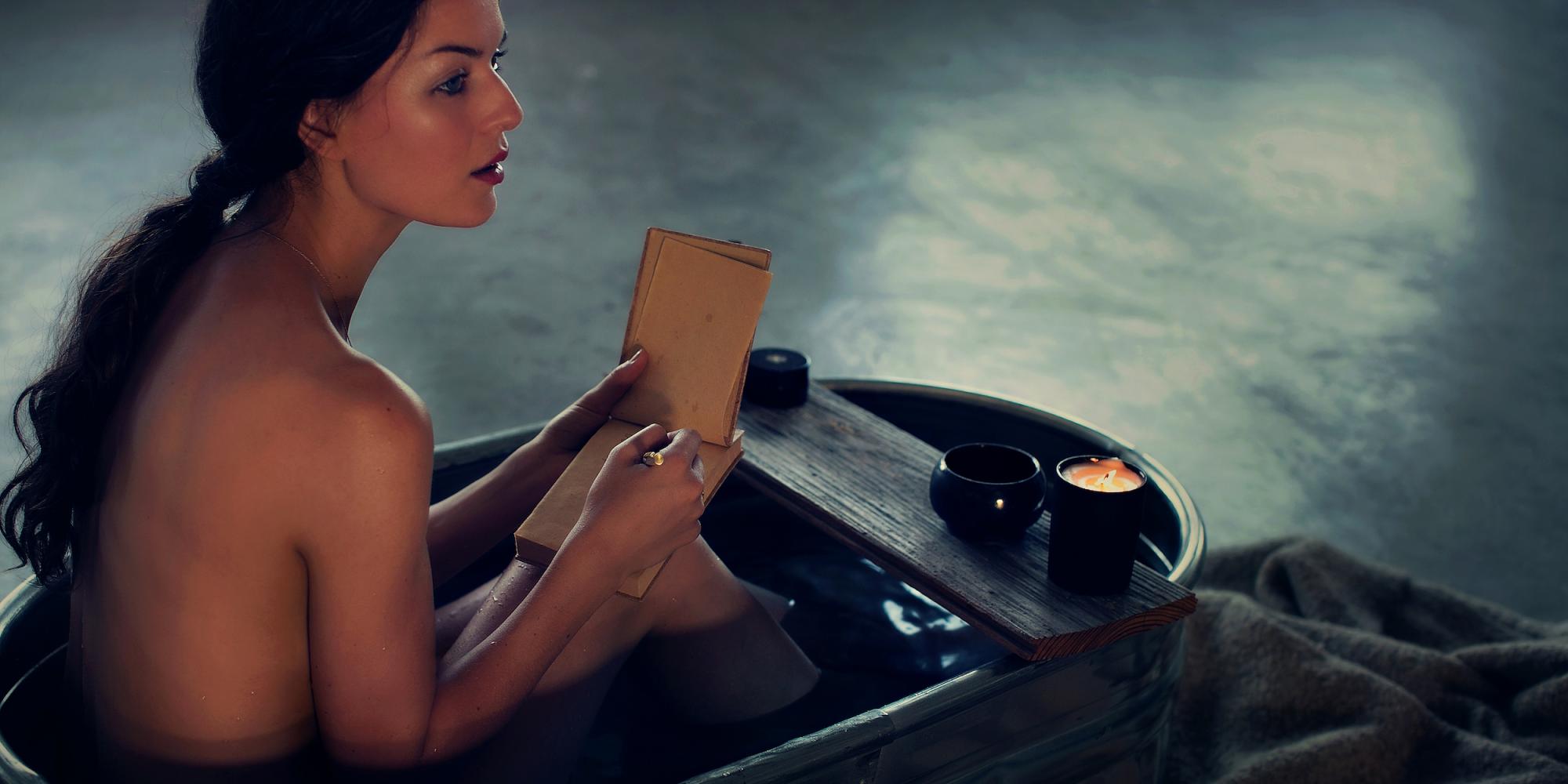
May Lindstrom Is A Badass—Here’s Why
Don’t let her angelic face, cherubic offspring or precious pet pig fool you: May Lindstrom is not to be messed with. Her big-city beauty boss status wasn’t exactly preordained, though. “I grew up in Minnesota, an hour outside a town of 800 people with old-school hippie parents,” says Los Angeles-based Lindstrom. “I was raised on 80 acres deep in the woods. We had an outhouse. We pumped our own water. We heated our water on a wood stove. I was raised using all natural products from the start. Not because it was trendy. That’s just who my parents were.” Lindstrom’s upbringing left her blithely unaware of her severe sensitivities to a slew chemicals, synthetic fabrics and more—a startling discovery process that included blisters and rashes and left her feeling scared in her own skin. It also put Lindstrom on her path to beauty entrepreneur. “I started doing a lot of physical formulations, working with others like myself or who’s skin trauma was even more extreme,” she says. With that, May Lindstrom Skin was born. Beauty Independent spoke to the primus inter pares of the green beauty scene about vanilla being anything but plain, nailing the perfect price point right out of the gate and why she has no problem pulling her eponymous brand out of some of the world’s most coveted retailers.
You manage your supply chain very closely. Do you encounter many issues with it?
It’s challenging. Almost all the ingredients that I use are available on the common market to anybody with internet access. Anybody can push a button and buy these ingredients, but they can’t buy what I have access to. My standards are very different. The olive oil that we get is not the same olive oil you can get. The avocado oil that we get is not the same avocado oil you can get. How they are grown, how fresh they are, how they are processed makes all the difference in the world as to whether they’re a clean ingredient with no nonsense in it, or whether it’s a truly effective, potent, healing, therapeutic ingredient. Those are two completely different worlds to me.
Our avocado oil doesn’t look like any other avocado oil. It’s green, bubbly and alive. If you look at my website, we have a page on there called “our ingredients.” It tells the story of literally every single ingredient that we use. There’s not an ingredient you’ll find in any of our formulas that doesn’t have a story, not one. Every single one is there with an intention and a purpose. Every single one has a sourcing story, which means every single one has a sourcing challenge.
Vanilla has to be one of the most basic ingredients on the planet. Everything has vanilla in it, from food to skincare. It’s everywhere because it’s almost entirely synthetic. When it’s made synthetically, it’s incredibly cheap. True, actual vanilla, real plant vanilla is the second most expensive plant on the planet. It’s really hard to find and grown only in a small handful of places in the world, and they’re all the places that have incredibly wild weather patterns that knock out entire crops. When entire crops are knocked out, it can put you behind three years on harvest. They’re also the parts of the world where there’s often political turmoil.
So, sometimes we just can’t get vanilla, which sounds crazy because it seems like that should be so easy. If we were anyone else, we could click a button and get some lower quality natural vanilla—which is still really hard to find, even at a lower quality—or simply order synthetic vanilla, which is widely available and very inexpensive. Nobody would know the difference, but I would know. So, we wait.
What we pay for vanilla today is more than 20 times what I was paying less than a decade ago, and it was one of our most expensive ingredients back then. It’s something that people barely even blink an eye at in an ingredient deck. It’s not regarded as anything fancy. It is one of those things that’s not really doing me any favors in the marketing department, and it’s adding an incredible amount of cost to my formulas, but I really believe in its purpose, so I continue to include it, and I continue to invest.
In our company, one person’s entire role is to source each one of our ingredients over and over and over again. Her job is not just buying from the most accessible source, the cheapest source, the easiest source, it’s to find the absolute best in the world without compromises. That makes her job really cool.
We only have seven products. We have a very small curation on purpose. We don’t have hundreds of ingredients, so it seems like it would be a pretty straightforward job. It’s not, because the growers that we were able to source from last season might be different than the growers we are able to source from this season. Even from the same farmer, the quality might not be up to the same standard, so we have to look at other farmers. It’s not just meeting baseline. It’s how can we make ourselves better with every single ingredient in every single batch. Every harvest is an opportunity to improve.

How do you handle product pricing when you’re dealing with rising ingredient costs?
I am grateful every day that I have nobody to answer to except myself and my customers. We have no investors. We have no board of directors. Our clients are our investors. We are built completely by the sales of our product. That’s all. That keeps it really honest. It keeps the guidelines really clear because there’s always only one question, and that’s, “What would my client want?” It’s not, “How can I make a bigger return? How can I make sure that this investor gets their money back? How can I scale?” I’m not asking those questions because they’re not important to me.
Obviously, I have to have a sustainable business. We’re really lucky that we do. It is a little bit of a dance. I don’t raise prices beyond where they need to be in order for us to be a functional, healthy business. We only had one price increase, and we did it seven years in. That first and only price change was last year, and we did a 15% increase across the board, which didn’t even cover inflation, not to mention the change in cost [of] ingredient sourcing. When I started, it was just me. We built a little studio in a bedroom in our house, and that was it. We had no overhead. We had no expenses. Now, we have an independent lab. Everything is within our walls, and everybody gets healthcare. There’s way more expenses today on every level than there was back then.
I was smart to price from the beginning in the luxury sector. It was the only way that I could do what I needed to do. I can’t source the ingredients that I have access to any cheaper, and I wouldn’t choose to pay my team less or to take away things like healthcare, even though for a company of my size it’s not legally required. I trust that our growth will support us, and it does. We have not a single sales person on our team. I don’t even have a social media team. We’re very intentionally small. Even though our reputation has grown, and our reputation is large, the way that we operate as a company is still from this very intimate place. We’re smaller than people think we are.
I am grateful every day that I have nobody to answer to except myself and my customers. We have no investors. We have no board of directors. Our clients are our investors. We are built completely by the sales of our product. That’s all. That keeps it really honest.
Who was your brand’s first retailer?
Spirit Beauty Lounge. We launched there the day that my daughter was born. When I started working on this collection, if someone had asked me if there was someone I would want to be sold by, she [Spirit Beauty Lounge founder Spirit Demerson] would have been on my list of like two. There wasn’t really anybody doing what she was doing at the time. I’d been a customer of hers for some years. She’s such a force. But I never even thought to try for that. I was pregnant with my daughter. I had very difficult pregnancies with both children. My idea was I would slowly launch this thing and, then, my daughter would be born and, while she was napping, I could slowly grow this business over her first handful of years. Maybe around the time she went into kindergarten, I would start to explore retail.
Spirit found my website. I don’t know how—really, I had done nothing. I had sent out a newsletter to like 30 people that were all friends and family, none of whom would ever be a customer. I was pregnant and throwing up all day every day. I don’t know how she found the website, but she did. She sent me this email and thought what I was doing looked interesting. I sent her a package, and she flipped out. I was in the middle of having my first baby—I had both my kids at home—and my husband comes in and is like, “Did you see Spirit’s newsletter? We’re live.” I had no concept of what I was getting into. When she started shouting about my brand to the moon because she loved it, everyone took notice.
At the same time, Rona Berg, editor at Organic Spa Magazine, had learned about what I was doing from makeup artist Christy Coleman. Christy and I had known each other for some years because of my work both as a model and a makeup artist. She was the only makeup artist at that time who was working in natural beside myself. Christy had a conversation one day with Rona about me and what I was working on. So, on a New York trip in which I met Spirit, I also had an interview with Rona Berg for Organic Spa. It was my birthday, and I was pregnant with my daughter. Two months later, in July of 2012, I had launched with Spirit, gave birth to my daughter and was on the cover and had a giant feature in the Organic Spa skincare issue, which was their biggest one of the year. From there, everything took off.
How did you decide on the products’ prices initially?
When I started working on my collection in concept in 2009, Tata Harper existed, but was pretty new. She was it as far as pretty packaging and high price point relative to other natural products, which were all the farmers market, Whole Foods variety. There was literally nobody who was doing what I was doing. I knew I couldn’t do what I was doing at any other price point, and I didn’t think anyone would notice if I came in[to the market] in the middle. I had to price at a place that was both sustainable and that put me in a different category. I could never have competed against $20 face oil. I would have failed as a company. I wouldn’t have been able to make the packaging so extraordinary. I wouldn’t have been able to source the ingredients that I was able to attain access to. All of these little pieces created a huge divide between what I was doing and what had previously existed.
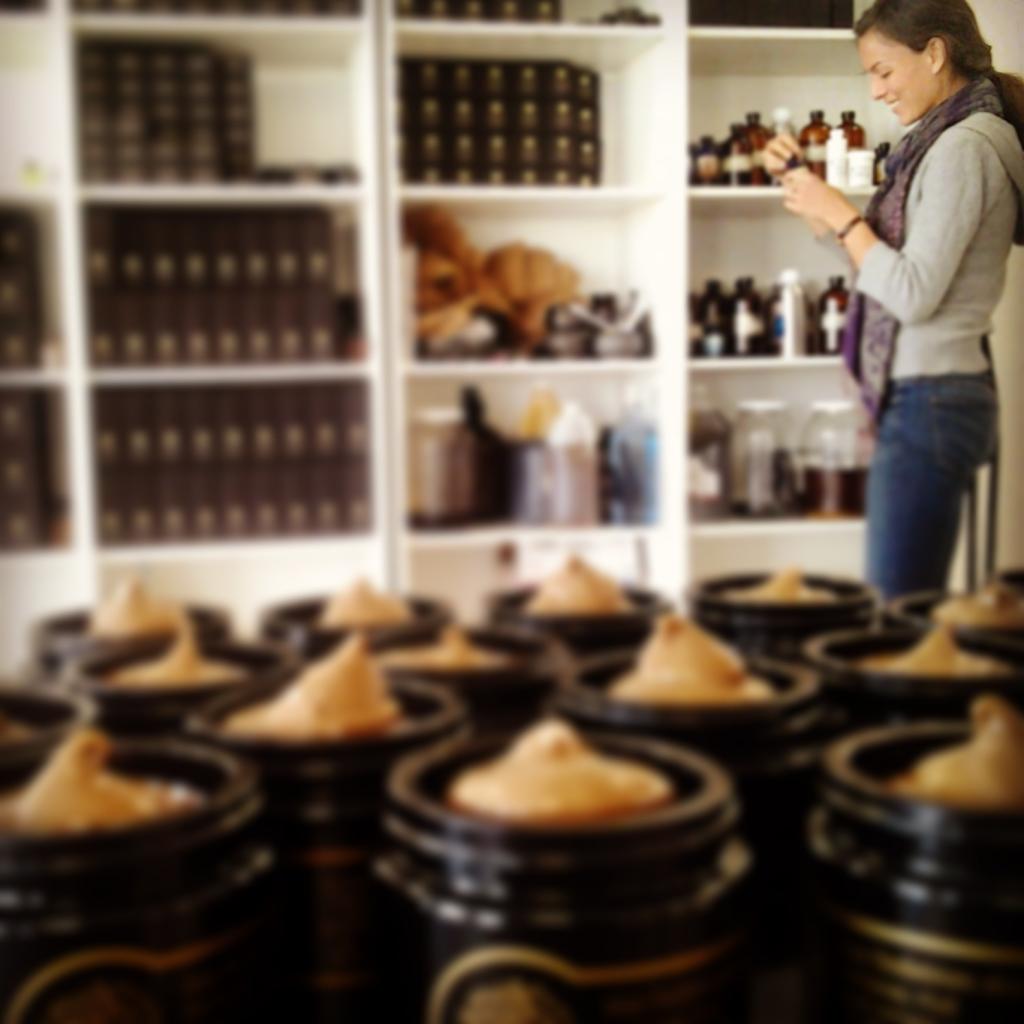
You’ve pulled your brand out of huge retailers. Why?
I let go of Cult Beauty, which was one of our top retailers in terms of visibility and revenue. We’d been with them for a number of years and most of our U.K. customers shopped there, so exiting was certainly a surprise to everybody except me. What most people didn’t notice was I had been doing that across the board for a couple years. Over the last three years, I’ve been very actively reducing our curation of retailers. We intentionally let go of over 40% on purpose for a number of reasons. What I’ve learned is more retailers for us is not better. That’s not a financial statement, it’s a philosophical statement. The more retailers we had, the less energy we had to give to each of them. And not everybody’s the right fit. In the beginning, I just said yes to everybody who wrote me a nice enough email. There weren’t standards around it. It was just, “This is so exciting. They want to sell my products. That’s amazing.” I didn’t even know that anybody would even give a shit, so I just said yes a lot.
Then, we’d get further in and [learn] they don’t know how to manage inventory. They don’t rotate stock. There are products just dying on the shelf. Their testers are always dirty. They’re out of stock on things. Their communication is terrible. They don’t pay their bills. This is true at tiny special boutiques throughout the world to massive luxury department stores, and everything in between.
I had to stop looking at the dollars. I had to stop looking at, “OK, how many partners do we have? How much money are we making?” I had to actively remove that part of the equation when I was looking at whether someone’s a good partner or not. It makes the decisions much more clearer when I go back to, “What do I think that my client deserves? Is this partner really representing us? Can they really tell our story? Are they really offering an extraordinary experience?” Almost always the answer is no.
At the brand’s max, how many retail partners did it have?
Probably close to a hundred—still really small. There’s the 80/20 rule, out of those hundred retailers, only 20 of them were really doing business. The others were taking all of our time. So, if you take away those 80, you can give more attention and better energy to those 20. It actually barely alters your revenue, and it removes a lot of stress and busy work.
In the case of Cult and a couple of other larger retailers, that did impact us at least temporarily financially or I thought it would impact us financially. It really came down to, were they able to deliver on our quality promise? What people have the hardest time with—again, this is from the smallest mom-and-pop retailers to the Barneys of the world to accounts like Cult—is inventory management. We put a birthday on every single bottle that we make. If you turn over our jar, you will see on the bottom it says exactly when it was made. It tells you to open it within six months. It tells you to use it within 12 months of opening.
Nothing sits on our shelf, and I expect that nothing sits on our retailer’s shelf. I ask our retailers to buy for a four- to eight-week cover. They are used to buying for a several month cover. Then, nobody rotates their stock. So, people will overbuy and, then, they don’t rotate. So, even the retailers that were selling a lot, which was the case of Cult, they would sell a ton, but they wouldn’t rotate their inventory. So, new inventory would come in, and it would go in the front. Older inventory would go further and further back.
They would have products that were being sold far past what I allow. Again, I’m not asking what is typical. They have to create new systems for us in order to do this. Our expiration is 12 months from opening, which is very standard across the board in natural, but what we’re asking is that, before that, you limit time on the shelf.
When we left Barneys, it was the same thing. We were in Barneys for a handful of years, and we tried so hard with them to update their inventory system, but they’re very antiquated. We felt horrible about it. They were such big supporters. They loved the brand. Their customers loved the brand. It wasn’t for lack of sales. It was that they couldn’t do one of the fundamental pieces of being a retailer for us. They were fine for anyone else, but me.
How did you discover product was sitting there?
When we started putting the birthdays on the bottles, we started asking for inventory checks from our retailers, which brands just don’t do. You certainly don’t ask somebody like Barneys or Cult. What’s great is, really, I don’t give a shit. I have my own standard. I answer to my customer. That’s it. If I upset a retailer in the process, our visions are not aligned because our retailers should also be thinking about our customer. If they have to do a little bit of extra work in order to honor that customer, they should jump at that opportunity for growth. When they don’t, that’s fine, but I’m not the right fit.
We have these great little spreadsheets that have gotten better and better over the years. Our retailer has to go and physically touch every piece of inventory they have. We pulled out of Net-a-porter for the same reason. Great sales, loved the company, they couldn’t manage inventory. They tried. Couldn’t do it. Imagine what their warehouse looks like, right? Massive. And I’m this little natural brand saying, “I’m sorry, you need to physically go to where my products are held, turn over every single box and bottle and enter those numbers into this document. And I’m going to have you do that every three months.” These conversations are hilarious.
If you do it, it’s actually really straightforward. You enter the batch number, and it will tell you, “You have three months to sell this. You have four months to sell this. You have one month to sell this. This is your final month to sell this.” Or, “You need to pull this immediately.” So, we’ve made it really straightforward, created some really solid systems around it to make it as easy as possible for those retailers to go through and do it. For those retailers that are not willing to do it, they’re no longer our retailers.
You pulled the brand out of Cult, but it’s now back in the U.K. with Space NK. Why?
Cult was not willing to do it, so that made it really clear. For me, it’s not even a conversation. Right as we were pulling out of Cult was when Space NK reached out to me. I initially just told them no, [saying,] “I have been in retailers like you over and over and over, and have left them all. I don’t know why this would be any different.” I was really straightforward with them, and what I liked was they didn’t balk at it at all. They said, “Yeah. That does sound challenging. We’re completely not set up for that. I don’t know how we would do it, but we want to figure it out. We’re going to circle back with you and see if this will work.” I didn’t think that much about it because, for me, it was a no.
Space NK kept coming back and saying, “We still don’t know how to do this, but we’re going to talk to the other warehouse person next week and, then, we’ll circle back after that.” They kept following up, which also doesn’t usually happen. Often it was, “OK, this is going to be even harder than we thought,” until they said, “Alright, I think we’ve got it figured out. Here’s what we’re going to try, and here’s how we’re going to monitor what we’re trying. If it fails, this is what we’re going to try instead.” I had a lot of respect for how honest they were about how difficult this is going to be for them, and that it might not work. I am totally happy to jump in with you and try, but you have to be in there with me. You have to be honest about what it looks like and what do we do if it does fail, and have ideas about what success looks like, too.
So, we launched. I was just out there in September with them. They have exceeded my expectations. It’s been really refreshing and surprising, especially for an account of their size, to have really committed to this effort with me. That doesn’t mean it’s going to be a success, but it’s the only way that it could even be considered to be a success at some point. I am optimistic. They have really impressed me with how things have gone so far. I’m hoping that this ends up being a powerful partnership for us.
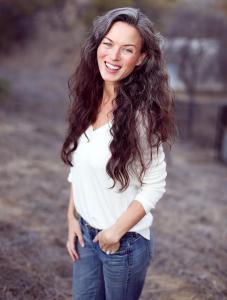
What percentage of your business is direct-to-consumer?
A lot. In the first years, we did a larger percentage with our retailers, and our direct business was slow. Then, it became about 50/50 and, over the last couple of years, as we’ve really focused on increasing our own direct service and making shopping through our website just the most extraordinary thing that you can do online, our business has grown there even more. Now, we do more sales through our direct website than all of our retail partners put together. When you order through our website, every package comes with a handwritten note. We have really beautiful samples that you get to choose. The packaging is so phenomenal. Every order is magical.
What’s your vision for the future? Do you want to grow your brand?
I get asked this question a lot, now especially. This is such a time of, “You going to grow or you going to die?” It’s really helpful that I don’t have investors. I have nobody to answer to except myself and our customers. So, the lines are so clear. It’s really easy for me to just stay where I am. I’m not opposed to growth at all, but I’m not trying to grow. Growth is not the goal. The goal is to keep doing exactly what we’re doing, but better every day. That better is applied to how we source. It is applied to the integrity of the ingredients. It’s applied to how those people physically growing our ingredients are treated, are paid, all the way to our own team, the healthcare that we provide, their pay [and] healthy work environment to how we care for our customers.
Our customer service is really, really personal. We are all about building unique relationships with each client. That’s where our money goes. That’s where our time goes. That’s where our energy goes. Somehow, as a result, we grow. We are growing so fast despite ourselves, despite continually letting go of even some of our strongest partners. I have three times let go of our number-one retailer. Sometimes I feel like a teenager, like I’m having a breakup every year.
The only thing that I know is that what we are doing is really good work, and my job is to keep doing that work. That’s it. I wouldn’t do it any other way. If our clients continue to come for us as they have been, in the growth pattern that we’re in, we will be a company for forever. My children and grandchildren will have this company.
